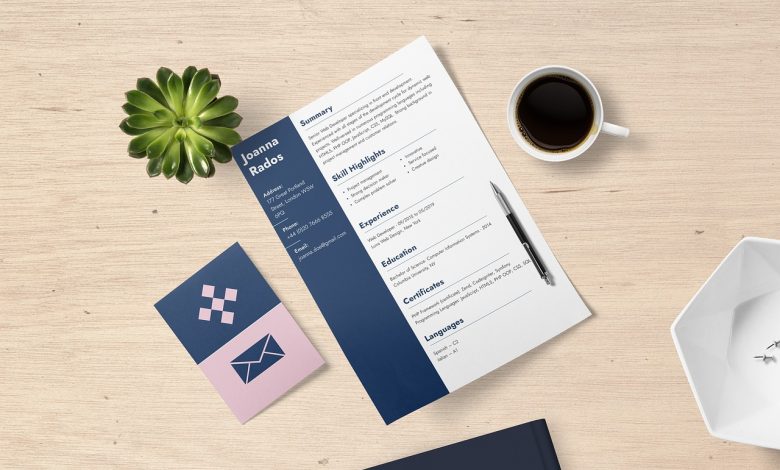How to Craft the Perfect Resume: A Step-by-Step Guide

Your resume is often the first impression you make on a potential employer. It’s your ticket to a job interview, and ultimately, to your dream job. Crafting the perfect resume is essential for standing out in a competitive job market. In this step-by-step guide, we’ll walk you through the process of creating a resume that highlights your qualifications and lands you that coveted interview.
Step 1: Choose the Right Resume Format
Before diving into the content, it’s crucial to select the appropriate resume format. There are three main types:
- Chronological: This format lists your work history in reverse chronological order, with your most recent job first. It’s ideal if you have a consistent work history and want to emphasize your career progression.
- Functional: A functional resume focuses on your skills and qualifications rather than your work history. It’s suitable if you have employment gaps or are changing careers.
- Combination/Hybrid: This format combines elements of both chronological and functional resumes. It allows you to highlight skills and achievements while still showcasing your work history.
Choose the format that best suits your background and the job you’re applying for.
Step 2: Contact Information and Header
Your resume should start with a clear header containing your name, phone number, email address, and LinkedIn profile (if applicable). Make sure your contact information is up-to-date and professional.
Step 3: Write a Compelling Summary or Objective
Beneath your header, include a brief summary or objective statement. This section should concisely describe your career goals and what you bring to the table. Tailor it to the specific job you’re applying for, highlighting relevant skills and experience.
Step 4: List Your Work Experience
If you’re using a chronological or combination format, list your work experience next. For each position, include the following details:
- Job title
- Company name and location
- Dates of employment
- Bulleted list of responsibilities and achievements
Focus on quantifiable achievements whenever possible. Use action verbs and metrics to demonstrate your impact. For example, instead of saying, “Managed a team,” say, “Led a team of 10 employees, resulting in a 20% increase in productivity.”
Step 5: Highlight Your Achievements
Incorporate accomplishments throughout your resume. Whether it’s in your work experience, education, or skills section, emphasize your achievements to demonstrate your value. Use the CAR (Challenge-Action-Result) method to structure your accomplishment statements. Describe the challenge you faced, the actions you took, and the positive results you achieved.
Step 6: Include Relevant Education
List your educational background, including the name of the institution, degree earned, graduation date, and any relevant honors or awards. If you have limited work experience, you can place your education section near the top of your resume.
Step 7: Showcase Your Skills
Create a separate section to showcase your skills. Include both hard skills (e.g., programming languages, certifications) and soft skills (e.g., communication, teamwork). Tailor this section to align with the job requirements. Use bullet points or a table format for clarity.
Step 8: Add Additional Sections (Optional)
Depending on your background and the job you’re applying for, consider adding additional sections to enhance your resume:
- Certifications: List relevant certifications and licenses.
- Projects: Highlight significant projects you’ve worked on.
- Volunteer Experience: Include volunteer work that demonstrates valuable skills.
- Languages: If you’re multilingual, note your language proficiency.
Step 9: Tailor Your Resume for Each Job Application
One size does not fit all when it comes to resumes. Customize your resume for each job application by incorporating keywords from the job description and emphasizing the qualifications that align with the specific role. This tailored approach increases your chances of passing through applicant tracking systems (ATS) and catching the hiring manager’s eye.
Step 10: Proofread and Edit
Before sending your resume, thoroughly proofread and edit it. Look for typos, grammatical errors, and formatting inconsistencies. Consider asking a trusted friend or mentor to review it as well. A polished resume demonstrates attention to detail and professionalism.
Step 11: Choose a Professional Format
Save your resume in a professional format, such as PDF, to ensure it maintains its formatting across different devices and software. Avoid using unusual fonts or excessive colors that may distract from the content.
Step 12: Craft a Standout Cover Letter (Optional)
While not always required, a well-written cover letter can complement your resume. Use it to express your enthusiasm for the position, provide additional context for your qualifications, and demonstrate your communication skills.
In conclusion, crafting the perfect resume is a strategic process that involves careful consideration of format, content, and customization. By following these steps and continuously refining your resume, you’ll be well-prepared to make a strong impression on potential employers and increase your chances of landing your dream job. Remember that your resume is a dynamic document, and it should evolve as your skills and experiences grow. Good luck with your job search!
Author Section :-
I am a passionate blogger. I love to share my thoughts and ideas through blog posting. Antonio Smith has five years of experience in Tech, Business, & Health. I am associated with, thetechnewsmedia.com, thenewtechnologyera.com, digitalmarketingjournals.com, searchenginedesk.com, digibotmedia.com, bloggeroutreachmedia.com, dailynotesjournal.com, edailynotes.com, Gamexspace.com, Countrygamers.com, globalsportsmagazine.com.



